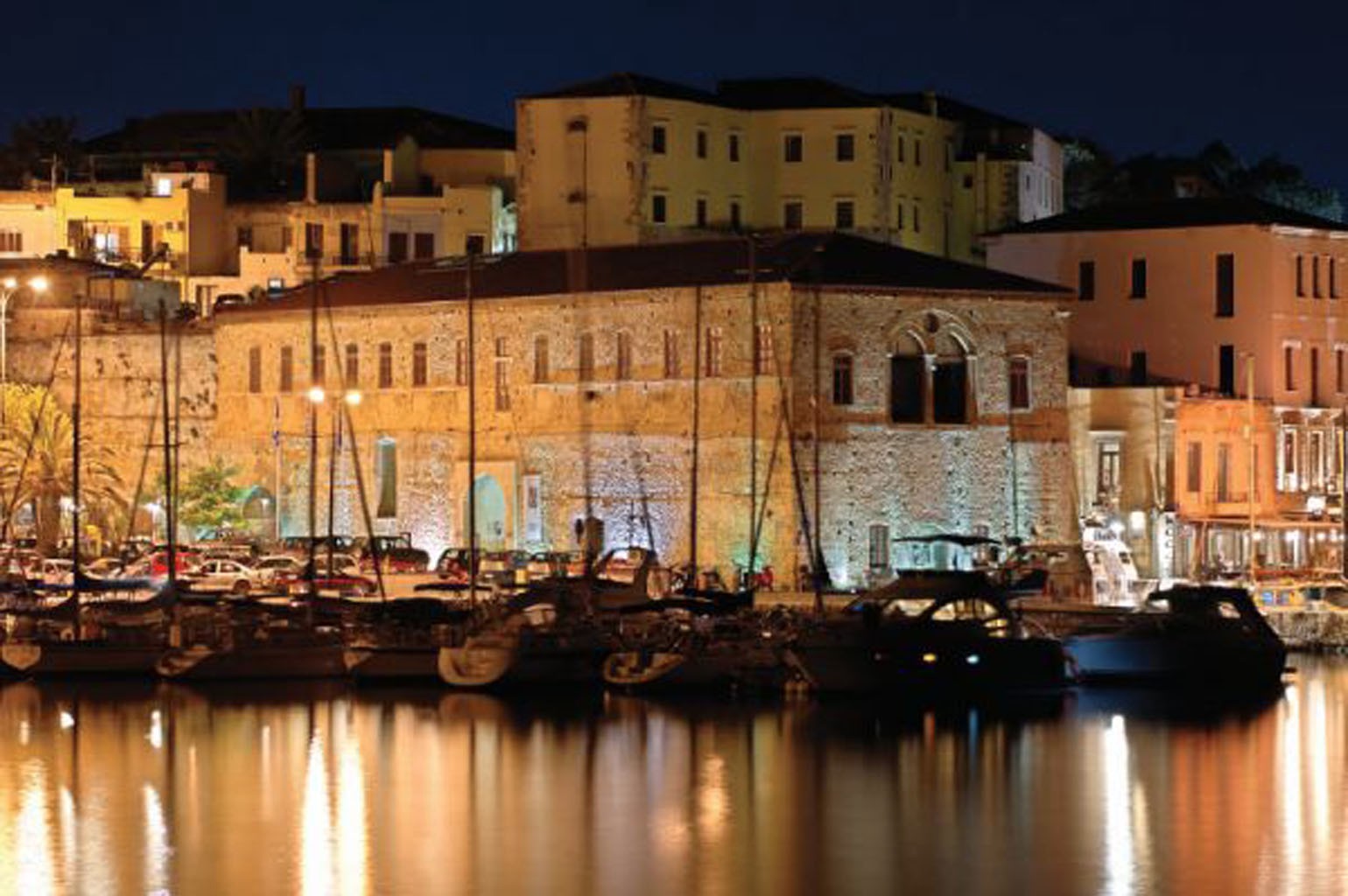The Grand Arsenal
Akti Enoseos & Pl. Katechaki
The construction of the Chania Arsenals (Venetian for “Shipyards”) began in 1497 and with gradual additions two impressive complexes were eventually formed. The first, at the eastern end of the harbor, comprised five arsenals, while the other, even further to the east, alongside today´s dock that had not been constructed at that time, comprehended seventeen adjacent arsenal. The westernmost was "The Grand Arsenal".
The dome sheds of the arsenal, which had finial pediment facades open to the sea for the approaching ships, were almost 50 metres long, 9 metres wide, with an average height of 10 metres. Arched passageways completed the party walls, while there were two entrance gates to the second complex: one at the south side of the 9th arsenal and the other at the west side of the 17th. The arsenals were made of carved sandstone in the perimeters of the arches and all across their northern spire, and with rough stones in the other parts, with an off-white binder mortar over the entire masonry.
By the end of the 19th century the seventeen-arsenal complex had only seven remaining domes with the Grand Arsenal separated from the rest of the complex, standing isolated to the west. In the beginning of the 20th century, the open sea front arches were sealed with walls, the dock was constructed, the Customshouse was erected between the isolated Grand Arsenal and the part of the complex that remained to the east, and the area changed radically.
The construction of the Grand Arsenal was initiated in 1585 under Intendant Alvise Grimani and was concluded in 1600. Initially, there was just a ground floor but with the addition of a first floor in 1872, during the late Ottoman period, the building entered a new era. The Grand Arsenal was used for many important civil purposes such as housing the Christian Community’s School. Starting in 1892, plays are also held in the main hall. After 1923 it was used as a public hospital, whereas from 1928 to 1941 it was used as the Town Hall.
The Grand Arsenal was abandoned for a time, but now, it has been restored as an impressive venue for Greek and internationalevents and exhibitions.



